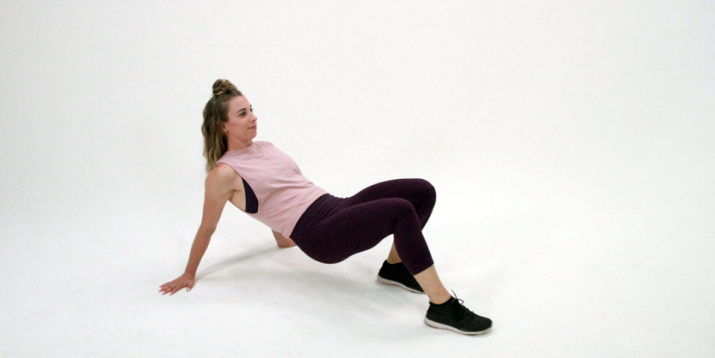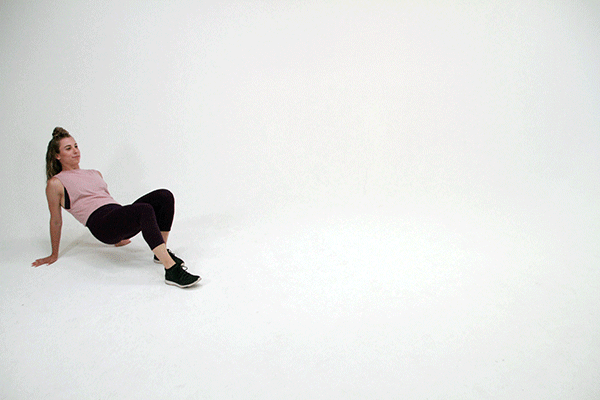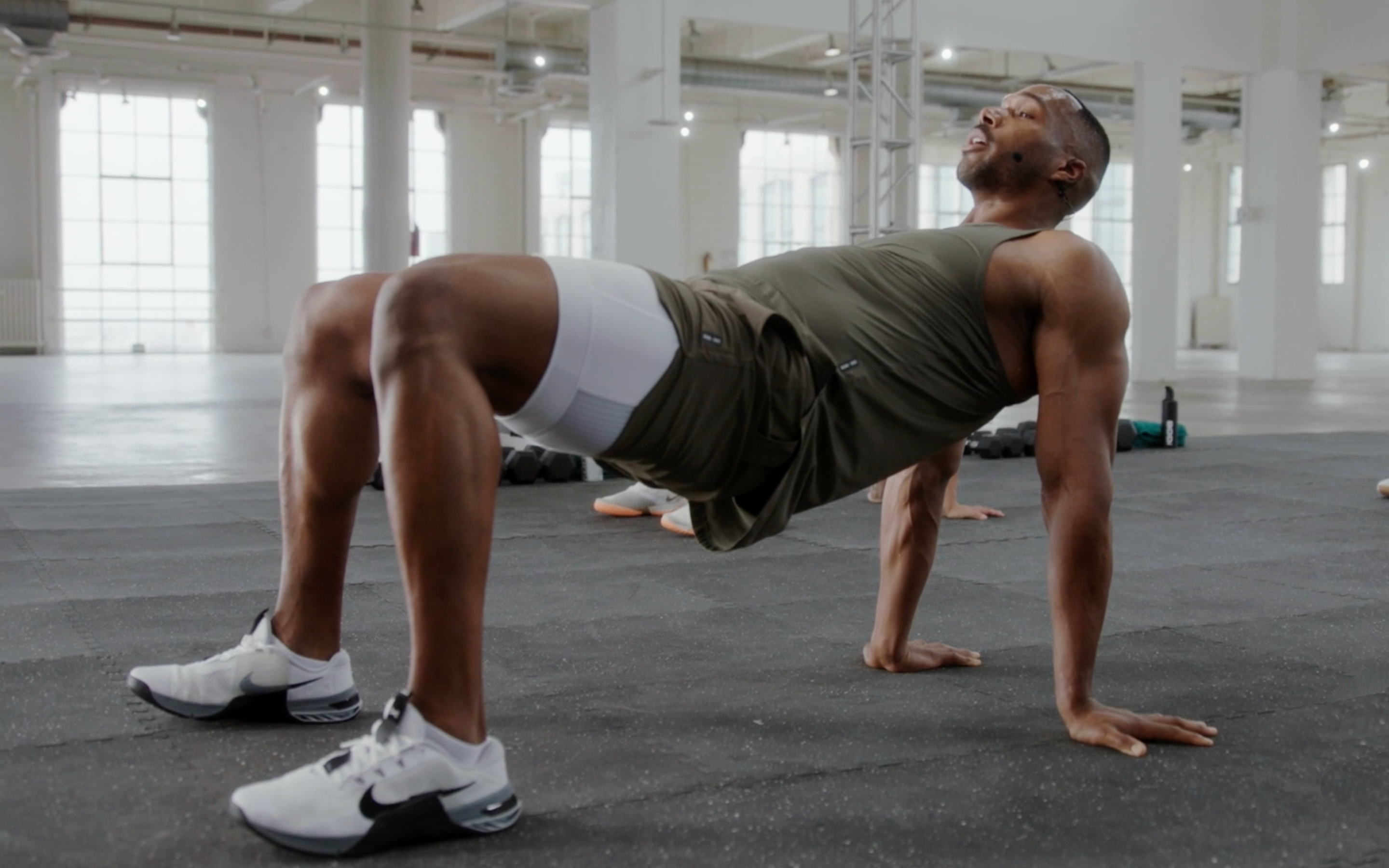How to Do the Crab Walk

If you were the MVP of your “crab soccer” team in elementary school, you’re in luck — the crab walk exercise is back. Dust off those crab-walking skills and see how this old-school exercise can give you a great total-body workout.
Crab Walk: Step-by-Step Instructions

- Sit on the ground and bend your knees so the soles of your feet are pressed against the ground. Your feet should be about hip-width apart.
- Reach both hands behind your waist and press your palms against the ground with your fingers facing forward or to the side.
- Use your glutes and core muscles to lift your hips so that you’re creating a “tabletop” position with your torso and thighs. Only your palms and the soles of your feet should be touching the floor.
- Keeping the hips lifted, step forward with your right foot and left hand, followed by your left foot and right hand. “The key to performing the crab walk correctly is to use a ‘cross-crawl’ movement pattern,” says Trevor Thieme, C.S.C.S.
- Continue to walk forward with opposing hands and feet for the specified number of steps before reversing the movement and returning to the starting position.
Benefits of the Crab Walk Exercise
Besides conjuring up fond memories of the playground, the crab walk exercise offers a number of fitness-related benefits:
1. It works your entire body
“The crab walk works your arms, shoulders, core, glutes, hamstrings, and quads,” says Thieme. The move engages nearly every muscle from your shoulders to your toes — so you don’t have to do as many exercises to work your whole body.
Total-body movements also create a bigger oxygen demand than isolation moves, which means they burn more calories per minute. That kind of efficiency is important to anyone who’s pressed for time (i.e., all of us).
2. It’s an upper-body burner
If your goal is to increase strength in your biceps and triceps, the crab walk exercise is a smart addition to your workout routine. While many cardio movements focus on the lower body, the crab walk exercise improves upper-body endurance — and your arms will be shaking (in a good way) long before the rest of your body.
3. It doesn’t require weights
If you’re looking to build strength, but you don’t have easy access to weights (or you’re just not into pumping iron), animal-inspired movements like the crab walk exercise are a great option, as they use your body weight for resistance.
What Muscles Does the Crab Walk Work?

The crab walk exercise is a full-body exercise, but it’s especially taxing on the upper arms, upper legs, and the core. The crab walk exercise predominantly works the following muscles:
- Triceps: The triceps, which are made up of three heads, are located on the back of the upper arm. The triceps extend the arm at the elbow and outwardly rotate the arm.
- Rectus abdominis: Often referred to as the six-pack, the rectus abdominis runs the length of the abdomen. The rectus abdominis flexes the torso and works with other core muscles to generate intra-abdominal pressure.
- Glutes: Your butt muscles — the gluteus maximus, the gluteus medius, and the gluteus minimus — work to stabilize the pelvis, extend the hips, rotate the leg, and lift the leg out to the side.
- Quadriceps: The quadriceps, aka the “quads,” are located on the upper front portion of the leg. The four muscles that make up the quads — the rectus femoris, vastus lateralis, vastus medialis, and vastus intermedius — work together to extend the knee.
- Hamstrings: You’ll find the hamstrings located below the glutes on the upper section of the back of the leg. In addition to flexing your knees, the hamstring muscles extend your hips and rotate the legs.
- Calves: The crab walk engages the soleus muscle, which points your toe when your knee is bent 90 degrees.
- Pectorals, front shoulders, and lats: These muscles work together to stabilize the shoulder during this exercise. One final caveat: Not everyone’s shoulders are happy in the crab walk position. If you try the move and yours get cranky, switch to the bear crawl — it’s not the same move, but you’ll get many of the same benefits.
